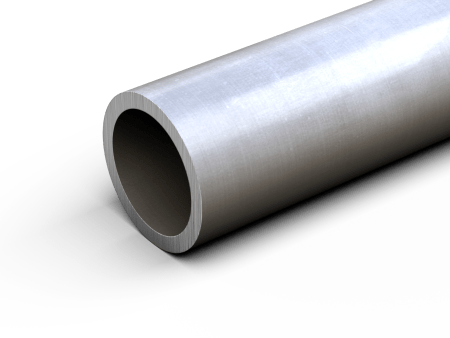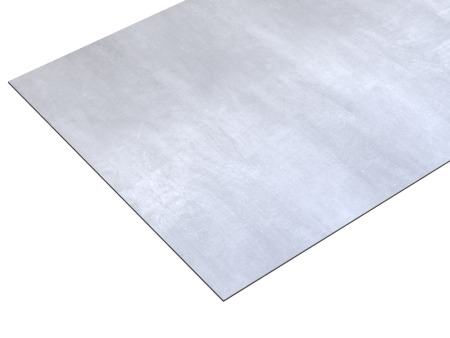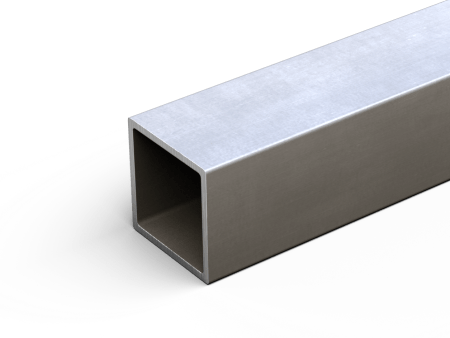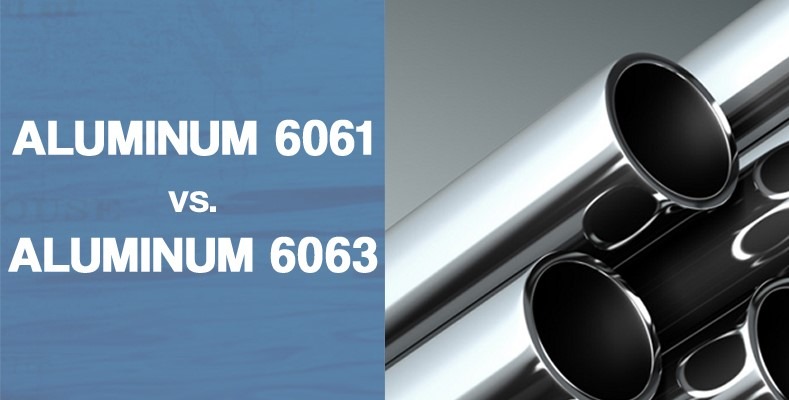Aluminum 6061 Vs 6063: A Comprehensive Comparison for Informed Application Choices
This article provides an in-depth comparison of Aluminum 6061 and 6063 (Aluminum 6061 vs 6063), two widely-utilized alloys in the 6xxx series. By focusing on their physical properties and performance characteristics, it assists professionals in making well-informed decisions for various applications. The examination covers Aluminum 6061’s strength and versatility alongside Aluminum 6063’s superior response to extrusion and enhanced corrosion resistance, highlighting their respective suitability for structural and architectural uses.
Both Aluminum 6061 and 6063 are similar in composition and mechanical properties, making them popular choices for extrusions. Each alloy incorporates magnesium to bolster strength and silicon to lower the melting point. Typical applications include transportation components, recreational products, machinery, equipment, and consumer durables.
For applications requiring an aluminum alloy with a high strength-to-weight ratio, excellent machinability, and weldability, 6061 aluminum is highly suitable. Conversely, if an aluminum alloy excelling in extrusion, corrosion resistance, and surface quality is needed, 6063 aluminum is the ideal choice.
Commonly Used Aluminum 6061 and 6063 Products

Aluminum Bar

Aluminum Pipe

Aluminum Sheet and Plate

Aluminum Structural Shapes

Aluminum Tube
Differences Between Aluminum 6061 and 6063
While Aluminum 6061 and 6063 share similarities, their distinct differences can guide you in choosing the appropriate alloy for your specific needs. For applications requiring higher strength, 6061 or 6082 aluminum is generally preferred due to their unique properties for different uses.
Aluminum 6061
● Features a lower melting temperature, thermal conductivity, and heat capacity.
● In the T6 temper, it offers higher yield strength and fatigue strength compared to 6063-T6.
● It provides less corrosion resistance than Aluminum 6063.
Aluminum 6061 is highly suitable for structural applications and construction projects demanding high-strength aluminum extrusions. Known as structural aluminum, Alloy 6061 is available in two temper variants: T4 and T6, each with slightly different properties due to post-extrusion processing.
Aluminum 6063
● Exhibits a higher melting temperature, thermal conductivity, and heat capacity compared to 6061.
● Offers a superior surface finish, making it the preferred choice for architectural purposes.
Referred to as architectural aluminum, Alloy 6063 can be soft anodized to achieve an aesthetically pleasing, colored finish for visual architectural and building applications. Common uses for 6063 aluminum include window frames, door frames, roofs, and sign frames, where high strength is not crucial. Additionally, it is used in electrical components, conduits, pipes, and tubes for irrigation systems, as well as architectural and building products, railings, furniture, appliances, boats, and motor vehicles. 6063 is primarily utilized in applications exposed to the elements due to its superior weather resistance and better corrosion resistance than 6061.
Comparative Analysis of Mechanical Properties: 6061 Vs 6063
An essential part of this discussion centers on the comparative analysis of the mechanical properties between Aluminum 6061 and 6063. Although both alloys belong to the same 6xxx series, they exhibit distinct characteristics making them suitable for various applications.
Mechanical Properties
Aluminum 6061: This alloy has a higher yield strength, making it more suitable for structural applications.
Aluminum 6063: Although it has a lower yield strength, it offers a superior surface finish, making it preferable for aesthetic purposes.
The distinctive properties of these alloys are further affected by heat treatment. For example, the strength of 6061 is notably increased through heat treatment. In terms of machinability, 6061 is easier to machine than 6063 because of its higher strength.
| 6061 | 6063 | |
|---|---|---|
| Tensile strength | 124-290 MPa | 145–186 MPa |
| Yield strength | 276 MPa/40000 psi | 214 MPa/31000 psi |
| Fatigue strength | 96.5 MPa/14000 psi | 68.9 MPa/10000 psi |
| Hardness (Brinell) | 95 | 73 |
| Machinability | Good | Fair |
| Thermal conductivity | 151-202 W/(m·K) | 201-218 W/(m·K) |
Practical Applications and Uses of 6061 and 6063 Aluminum Alloys
6061 Aluminum Alloy
This alloy is generally chosen for its strength and versatility in various industrial applications. It is widely used in the marine and automotive industries due to its exceptional strength, excellent machinability, and high corrosion resistance.
6063 Aluminum Alloy
Favored for its superior aesthetic qualities and corrosion resistance, 6063 aluminum is the preferred choice for architectural and decorative applications. It is extensively used in situations where aesthetic appeal and surface finish are crucial, thanks to its excellent finish and extrudability.
| Alloy | Primary Use |
|---|---|
| 6061 | Industrial Applications |
| 6063 | Architectural and Decorative Uses |
Both of these alloys are well-suited for extrusion processes, with 6063 demonstrating superior extrudability. However, when it comes to machining operations, the strength and versatility of 6061 aluminum make it the more preferred choice.
Conclusion
In summary, it is crucial to understand the unique characteristics of Aluminum 6061 and 6063 across various sectors. Aluminum 6061 provides exceptional strength and versatility, making it ideal for structural applications. Conversely, Aluminum 6063 is renowned for its excellent extrudability and corrosion resistance, making it a preferred choice for architectural applications. Choosing the appropriate alloy demands a thorough comprehension of their properties and potential uses, ensuring optimal performance and cost-effectiveness in diverse industrial contexts.
FAQs – Aluminum 6061 vs 6063
Q1: What are the main differences between Aluminum 6061 and 6063?
A1: Aluminum 6061 is known for its superior strength and versatility, making it ideal for structural and industrial applications. On the other hand, Aluminum 6063 is favored for its excellent extrudability and corrosion resistance, which makes it more suitable for architectural and decorative uses.
Q2: Which alloy has better machinability, 6061 or 6063?
A2: Aluminum 6061 has better machinability compared to Aluminum 6063. This makes 6061 a more favorable choice for machining operations, especially in applications that require high precision and strength.
Q3: Why is 6063 aluminum preferred for extrusion processes?
A3: Aluminum 6063 exhibits enhanced extrudability compared to Aluminum 6061, which allows it to be easily shaped and formed into complex profiles. This property makes 6063 an excellent choice for applications involving intricate designs and shapes.
Q4: Can Aluminum 6061 and 6063 be welded?
A4: Yes, both Aluminum 6061 and 6063 alloys can be welded. However, Aluminum 6061 is generally easier to weld and produces stronger welds compared to Aluminum 6063.
Q5: Why is Aluminum 6063 chosen for architectural applications?
A5: Aluminum 6063 is chosen for architectural applications because of its superior surface finish and corrosion resistance. These properties make it ideal for window frames, doors, and other decorative elements where appearance and longevity are essential.
Learn more about Alloy Steel vs Stainless Steel in Custom CNC Machining, visit website: https://fuyutechnology.com/alloy-steel-vs-stainless-steel-in-custom-cnc-machining-unveiling-the-distinctions-2199/


